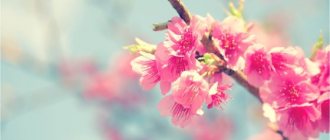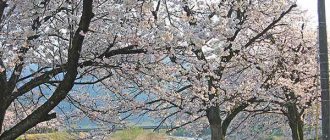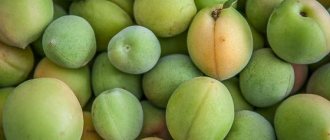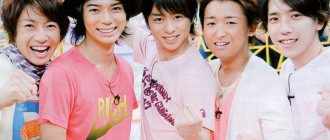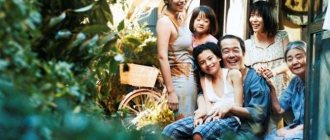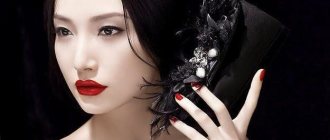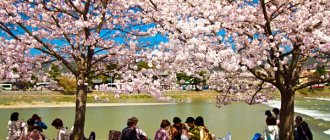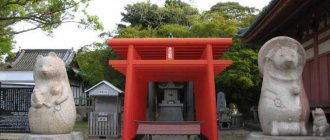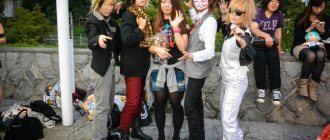Sakura. The heart and soul of Japan
Terry cherry blossom petals fall,
fluttering in the wind.
What images come to mind when we talk about Japan? Probably one of these images is clouds of cherry trees, shrouded in delicate pink flowers, the petals of which softly fall to the ground like snow...
For the Japanese, cherry blossom (桜 sakura) is not just one of the natural phenomena. It's much, much more. Indeed, during the cherry blossom season, the whole country is filled with a festive atmosphere, which begins with the first blossom of cherry trees in Okinawa (southern Japan) and continues until the last cherry petal falls in Hokkaido (northern Japan). Let's see what place sakura occupies in Japanese culture.
Sakura. Blooming season
On the southern island of Okinawa, the first flowers may appear as early as January, then the cherry blossom front (桜前線 sakura zensen) moves along the archipelago. Trees bloom in late March and early April in the central regions of Japan (including Kyoto and Tokyo), and in early to mid-May in northern Hokkaido. Shops at this time are filled with drinks and food related to sakura, and the report on the beginning of flowering in any region becomes much more important than the weather forecast - the Japanese are very proud of their reverent attitude to the annual forecast of the date of the beginning of flowering of cherry trees. The Japan Meteorological Agency has produced an annual cherry blossom forecast for the central Kanto region for nearly 70 years, a high-tech procedure involving complex mathematical calculations that is then broadcast on all major television channels. The Japan Weather Association's forecast for March 29, 2021 looks like this:
Words in the picture:
桜 sakura – sakura
開花 kaika – blossoming, blossoming
予想 yoso: – prediction
日本気象協会 nihon kisho: kyo:kai – Japan Weather Association
発表 happyo: – announcement, message
More than two hundred varieties of sakura grow in Japan, but the most common is “royal cherry” (染井吉野 somei yoshino) with pale pink petals; however, depending on the variety, the color of the flowers can vary from snow-white to scarlet.
The process of cherry blossoms is so important in Japan that even terms such as 開花日 kaikabi - flower opening day (開 - open / open, upper reading kai; 花 - flower, upper reading ka; 日bi - day) and 満開日 mankaibi have appeared - the day when up to 80% of the flowers open (満 - fill/fill up, full, upper reading man; 開kai; 日 bi). The arrival of these days is judged by 59 sample trees located throughout the country near the main weather stations. In order for a tree to become a model, it must go through a careful selection process - candidates are selected based on age and ability to flower well.
Hanami. The tradition of admiring sakura flowers
The Japanese are known throughout the world for their centuries-old tradition of honoring cherry blossoms. Back in the 8th century, imperial courtiers admired the pink petals before starting to create the next poetic masterpiece or engage in any art.
Every spring, people flock to the most popular tree blossom spots to enjoy the beauty and airiness of cherry trees while sitting under a huge pink canopy while picnicking with their family and friends. This annual “ritual” is called hanami 花見 (花 hana – flower; 見 verb miru – to look). According to legends, this tradition originated during the Nara period (710-794), although at that time the flowers of plum trees (梅ume) were mainly admired. However, during the Heian period (794-1185), known for its flourishing court culture, preference was already given to sakura, and the word “hanami” began to be associated specifically with cherry trees. The tradition, which at first was widespread only among the court elite, then moved to the samurai class, and in the Edo period it became a custom for the entire population of Japan. It is known that the eighth shogun of the Tokugawa dynasty (1716-1745), Tokugawa Yoshimune, specially planted cherry trees to spread the hanami tradition throughout the country.
Sakura flowers are distinguished by their radiant, delicate, fleeting beauty. After a short period of full bloom, they begin to gracefully fall from the trees - it is believed that sakura is most beautiful during this period, when white and pink petals, softly floating in the air, fall to the ground, covering it with a white sheet.
There are places all over Japan that are famous for the beauty of their cherry blossoms and attract crowds of tourists during the spring season. If you are ever going to see cherry blossoms in Japan, it will be useful to know the best places for this.
- Mount Yoshino (吉野山) has been Japan's most famous cherry tree viewing spot for centuries. More than 30 thousand sakura trees grow in this place. This mountain is located in Nara Prefecture.
- Shinjuku Gyoen (新宿御苑) is an imperial park located in the Shinjuku and Shibuya districts, one of the largest and most popular parks in Tokyo. More than 1.5 thousand trees of various varieties grow here, due to which cherry blossoms can be observed for quite a long time, since the trees bloom at different times. This is a great place to take a break from the hustle and bustle of busy Tokyo.
- Himeji Castle (姫路城) is one of the oldest castles in Japan, which has survived to this day and survived numerous fires and earthquakes. This castle has been a UNESCO World Heritage Site since 1993 and is the most popular tourist destination in Japan. The castle is surrounded by many cherry trees, so in the spring you can see it in all its glory. Located in Himeji City, Hyogo Prefecture.
- Mount Fuji (富士山) - here you can see two symbols of Japan at once - Mount Fuji, sacred to the Japanese, and the cherry trees surrounding it. Fuji-san is also a UNESCO World Heritage Site since 2013. Located 90 km from Tokyo.
- Ueno Park (上野恩賜公園) is one of the most famous parks in Tokyo, where more than a thousand cherry trees line the avenue leading to the National Museum.
- Kenrokuen Garden (兼六園) is one of the top three traditional parks in Japan. The park is beautiful at any time of the year, but especially during the cherry blossom season. It is so big that it will take you several hours to walk around it. Located in Kanazawa City in Ishikawa Prefecture.
- Hanamiyama Park (花見山). This park is located on the slopes surrounding local farmers' farms. It appeared precisely thanks to their efforts - farmers began to plant the nearby area with ornamental plants and trees. This park features a variety of cherry and other trees, as well as beautiful views of Mount Azuma in the distance. Located in the city of Fukushima in the prefecture of the same name.
In addition, in Japan there are individual cherry trees that have become famous throughout the country, for example, the Jindaizakura sakura (神代桜) in Yamanashi Prefecture, which is about 2 thousand years old, and the Miharu Takizakura sakura (三春滝桜) in Fukushima Prefecture, which is more than 1 thousand years old. thousands years.
Having visited at least one of these places during the cherry blossom season, you will certainly understand why millions of Japanese treat sakura with such reverence and respect. We assure you that you simply will not be able to remain indifferent to the beauty and tenderness of these trees.
Sakura. Reflection in Japanese culture
The very first mention of sakura can be found in one of the oldest Japanese written monuments, “Annals of Japan” (日本書紀 nihon shoki), compiled in the 8th century AD, which tells about the moment when a sakura flower fell into the bowl of sake of Emperor Rityu . Now no one will doubt that sakura is one of the symbols of Japan, which has a very close connection with its history, culture and identity.
For more than a millennium, the image of cherry trees has inspired Japanese poets to create thousands of haiku, each of which is unique in its own way. In prose works, beautiful women are often compared to sakura flowers and, conversely, sometimes sakura symbolizes courageous acceptance of one’s fate. Because of its symbolism, the image of the cherry blossom has been reflected in fine, cinematic and other arts, and at certain periods of time it was even used to promote propaganda and uplift the spirit of the Japanese people. Also, sakura is one of the main motifs of the Japanese tattoo irezumi 入れ墨 (入 – iru/ireru/hairu – enter, enter; 墨 sumi – ink, black ink) along with dragons, tigers and carps. Even in Japanese cuisine you can find dishes and drinks that are inextricably linked with the image of sakura and spring in general.
Cherry blossoms are the embodiment of Japan's deep philosophical beliefs. Sakura embodies the philosophy of wabi-sabi and the Shinto categories of impermanence and renewal. It is believed that the blossoming of cherry trees symbolizes human life, more precisely, its ephemerality - short-term, transient and fleeting, and this symbolic meaning is often associated with the influence of Buddhism. By the way, you can read in more detail about this and other Japanese philosophical categories here.
Literally, the cherry blossom season is associated with new beginnings in life - for example, the financial and academic year in Japan begins on April 1, when sakura blooms in the central and more western regions. This is the time of school graduations and admission to school, college or university. There is even an idiomatic verb 桜咲く (sakurasaku) “sakura blossomed” - this can be said about those who have succeeded and successfully passed any entrance exams.
Japan hosts numerous events, festivals and tours related to the cherry blossom season, and sees an influx of foreign tourists during the spring season. Many people flock to Japan at this time of year to enjoy the pleasant weather of the Japanese spring, beautiful landscapes with flowering trees and a relaxed holiday atmosphere that covers all settlements, from big cities to the smallest village.
Sakura in Japanese cuisine
One of the distinctive features of Japanese cuisine is seasonal desserts, which are prepared at certain times of the year. Spring sweets appear in stores in February, as if foreshadowing the onset of warm spring days. Many of these sweets and drinks are, of course, associated with cherry blossoms. And they're not just associated with color, flavor, and shape—some actually contain cherry fruit, petals, or leaves.
There can be many options for spring sweets: carbonated drinks, candies, candies, ice cream, chocolate; from traditionally Japanese sweets - wagashi 和菓子 (和wa - harmony, peace, in this case - in the meaning of “Japanese”; 菓ka - sweets; 子shi - child) - rice balls, pies, jelly. Let's see what kind of wonders we can try in spring in Japan.
Among drinks, for example, we can find Pepsi Sakura, pale pink in color with sakura flavor - a kind of experiment by Pepsi in Japan.
Chocolate of various flavors and colors is no longer a novelty in Japan. Naturally, manufacturers could not ignore the trend of the spring season and created themed chocolate for the Japanese audience. Thus, the Kit Kat company released Kit Kat Sakura Matcha chocolate with an original combination of the flavors of matcha green tea and sakura. Fun fact: The name Kit Kat is similar to a shortened version of the Japanese expression きっと勝つ (kitto katsu), which means “you are sure to win,” so in Japan people sometimes use this chocolate as a gift to wish good luck or to encourage a friend in an endeavor.
The global coffee chain Starbucks also decided to please the Japanese and in 2021 created a whole line of sakura-related releases, ranging from mugs and bottles with cherry prints to themed drinks. Drinks include Sakura Cream Frappuccino and Sakura Cream Latte with white bean paste, condensed milk and sakura flowers. The topping includes pink chocolate flakes, reminiscent of cherry blossom petals, and crunchy pink mochi balls. Do you agree, it looks gorgeous?
Let's look at more traditional types of Japanese spring drinks and desserts. For example, this is sakura-yu, or sakura-cha (桜湯桜茶), which can be translated as “cherry blossom tea,” a drink that is obtained when specially processed cherry blossoms are thrown into hot water, in which they seem to be blossom again. This essentially herbal tea is a favorite drink at special occasions - at bride shows (o-miaiお見合い) or at weddings (kekkonshiki 結婚式).
One of the traditional spring delicacies is sakura-mochi (桜餅). These are sweet pink rice balls or cakes filled with red bean paste, wrapped in sakura leaves pre-soaked in a special brine.
Sakura-manju (桜饅頭) is a steamed dessert made from white or pink wheat flour with a sweet bean filling. The top of such a “pie” is usually crowned with sakura petals.
Sakura-yokan (桜羊羹) is a sweet, jelly-like cherry blossom pastille made using a more natural agar-agar instead of gelatin. Sometimes this dessert is made multi-layered, and in this case, each layer differs in taste from the previous one.
These are just a few examples of Japanese desserts that are somehow related to sakura. By the way, if you are interested in other unusual Japanese food, then this is the place for you.
Would you like to feel like a true Japanese, admiring the cherry blossoms and drinking sake under the pink falling petals? Or maybe you are more interested in gastronomic wonders that you can only try in Japan and only in the spring. Then why not set a goal and make your dream come true? In this endeavor, your knowledge of Japanese will certainly come in handy! If you are interested in learning it, we advise you to check out our main course.
Japanese
Japanese schoolchildren in their native language lessons study a subject that is not called the “Japanese language” (nihongo), but the “language of the country,” the “national language” (kokugo).
From an ideological point of view, Japan is a country of one language and many of its dialects.
Japanese
, Japanese (English), in Japanese 日本語 in hieroglyphs or にほんご in the hiragana syllabary
(read “nihongo”)
, 日语
(simplified Chinese, read “zhiyu” in Chinese)
- the official language of Japan (de facto, not specified by law ). [1] The number of native speakers in the country and abroad is approximately 126 million people. [2]
In Russia, according to the 2002 population census, 24,787 people speak Japanese. [3]
How to read signs in Japanese
Since 1959, Japanese texts have been written and printed primarily in horizontal lines, with characters running from left to right.
Stress in Japanese is musical: a certain syllable (and not always) is pronounced in a higher tone. Also, vowels and consonants differ in length. Typically, when reading Japanese words (company names and surnames), Europeans emphasize raised syllables or long vowels.
Writing personal names
In Japanese text, the surname is written first, then the given name. In Russian transcription they change places. Example:
黒澤明 (pronounced "kurosawa akira") – Akira Kurosawa (film director)
Most of the text consists of hieroglyphs (kanji in Japanese, 漢字 or かんじ), mainly borrowed from China in the 6th-8th centuries. In 1992, the Japanese Ministry of Science and Education limited the number of commonly used characters to 1,945 characters. Modern Japanese text is always a mixture of hieroglyphs and characters of two syllabary alphabet - hiragana and katakana.
Hiragana and katakana syllabaries
The Japanese Internet is dominated by syllabary signs. Although they are provided on the keyboard, most Japanese enter these characters by typing the corresponding syllable in Latin characters: for example, ku instead of the く character. At the same time, periods and commas are mostly Japanese.
As the Internet develops, even words denoted by hieroglyphs from the official list are increasingly written in syllabic alphabet. By the roundness of the characters, one can easily distinguish hiragana (ひらがな), the characters of which are usually used to write native Japanese words. The same word can be written in hieroglyph and hiragana.
The more angular katakana (カタカナ) conveys the same syllables, but is more often used to convey words borrowed from European languages. Katakana is used to write trademarks, station names, and ship names.
Latin alphabet Romaji
To convey Japanese words in English text, the Latin alphabet is used, in Japanese romaji (ローマ字). Long vowels in the Latin alphabet are marked with a horizontal line above the letter: ā,ē,ī,ō,ū.
The periods, commas and quotation marks familiar to Europeans are similar to individual elements of hieroglyphs. To avoid confusion, the following styles are accepted in the countries of the Far East: 、 comma 。 period 「」 quotation marks.
"Money"
The sign for “money” is difficult to break down into its component elements; it resembles the hieroglyph全 with dots between the second and third strokes . He is all a key - key number 167 .
They:キン – gold; (abbr.) Friday; "golden general" (in shogi) コン
Kuns:かね – money; metal
In the ancient style of the hieroglyph, the upper part was the phonetic 今, which was responsible for reading “kin”. The remaining features depicted metal located deep in the earth. As a mnemonic rule , we can take the following: “man” 人 (the element at the top) extracts “metal” from “earth” 土 and makes “money” 金 from it.
| Word | Reading | Translation |
| 金属 | きんぞく | metal |
| 現金 | げんきん | cash; + な mercantile, selfish |
| 黄金 | おうごん | gold (metal; color); gold, money |
| お金 | おかね | money |
What do you think of these hieroglyphs? For some they have become new, and perhaps someone has already learned them a long time ago, but repeating them is never harmful! Which “kanji”, in your opinion, symbolize Japan and are the most “Japanese” in this regard? Share your ideas in the comments!
Japanese characters: “tea”, “sakura”, “art”, “money” - learn stroke order, reading and meaning. More details on our website!
Source
Hieroglyph sakura in Japanese
Sakura has bloomed in Japan! At this time, spring takes precedence over winter both in Japan and in other Asian countries. People go outside to celebrate the end of winter and admire the beautiful flowers. We have collected in this article everything you need to know about this time of year in Japan and holiday events.
When does sakura start to bloom?
It starts in mid-March in southern Japan and ends in April or early May in Hokaido, Japan's northernmost island. Among the Japanese, special cherry blossom predictions - sakura-zensen (桜前線) - , allowing you to know exactly when sakura will bloom nearby. Since flowering lasts only 2 weeks, you can easily miss this important moment!
Why is cherry blossom such an important role in Japanese culture?
Cherry blossoms are an integral part of the spring landscape, as well as a symbol of the Japanese spirit: beauty, life, moment and death. Blooming represents spring and a new beginning after a long winter. This wonderful time does not last long at all - in Japanese culture, the withering of flowers symbolizes the transience and fleetingness of life. If you watch cherry blossoms for a long time, you can see how a whole life begins and ends. Since school graduation and university entrance exams take place during this period, it is a very memorable time for most Japanese to reflect on the past and prepare for new beginnings.
The art scene in Japan has long been heavily influenced by cherry blossoms. Many Japanese writers, artists and musicians have found inspiration in beautiful flowering trees and festivals. Follow the link to find a translation of beautiful Japanese haiku about the cherry blossom season. Singers sing about cherry blossoms as a symbol of the fleeting nature of a meeting and subsequent parting. Both traditional and modern music use cherry blossoms as a main theme. We have specially selected a couple of thematic clips for you:
In the end
These are the most famous flowers in Japan. Aren't they beautiful? The Japanese love to admire flowers.
Ikebana 生花
Views: 3,115
Share link:
- Tweet
- Share posts on Tumblr
- Telegram
- More
- by email
- Seal
Liked this:
Like
